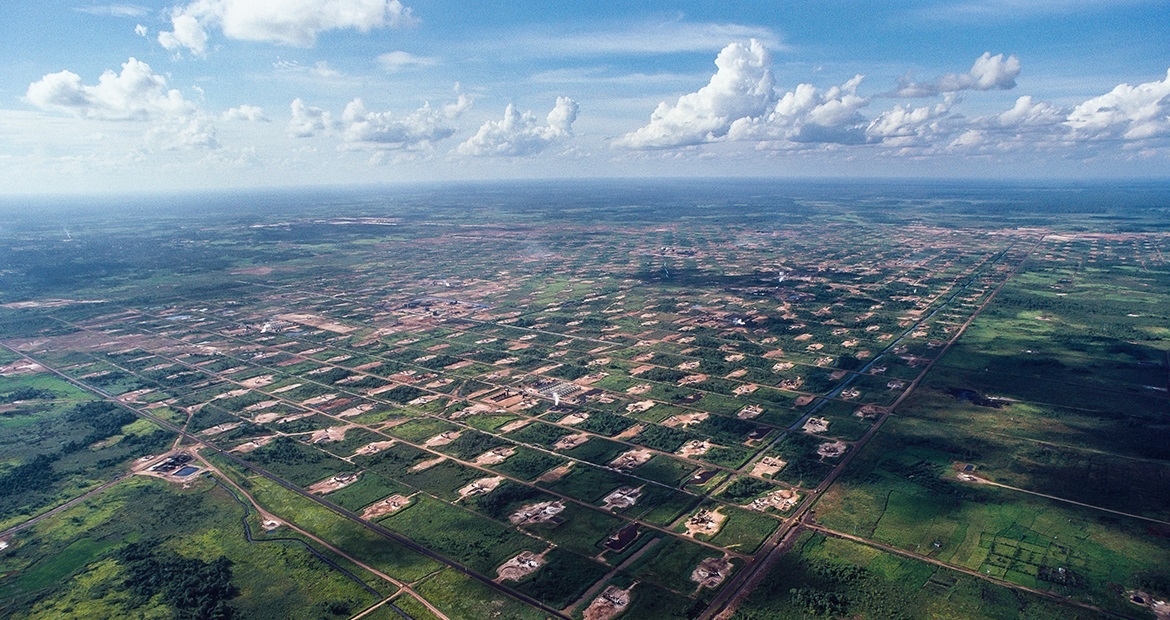Emission regulations for diesel engines used in upstream oil and gas activities
Rapid progression of emission regulations in recent years, combined with regulatory variations across geographies made it more challenging to understand how these evolving regulations apply to engines used in the oil and gas industry.
By Aytek Yuksel, Content Marketing Leader - Power Systems

This article outlines two key exhaust emission regulations focused on diesel engines often used in upstream oil and gas activities. These are the diesel engines often used in equipment such as cementers, blenders, mixers, mud pumps and frac rigs you would see in upstream oil and gas activities.
Environmental Protections Agency’s (EPA) Nonroad Exhaust Emission Standards
Most recently in the United States, the EPA's Tier 4 emission regulations have replaced the previous Tier 4 transitional, Tier 3 and Tier 2 regulations depending upon the engine range. For many of the upstream oil and gas activities, diesel engines now need to comply with the limits outlined in the EPA Nonroad Compression Ignition Exhaust Emission Standards.
The key focus of current Tier 4 emission standards, in comparison to Tier 3 and Tier 2, has been the reduction in nitrous oxides (NOx) and particulate matter (PM).
Por ejemplo:
- Diesel engines used in cementers, blenders, mixers and acidizing equipment often deliver 100 to 750 horsepower. These engines are required to comply with Tier 4 regulations since 2014 and 2015. These Tier 4 engines emit 90% less particulate matter than their Tier 3 versions. These engines also emit 85% less nitrous oxides compared to their Tier 3 versions.
- Diesel engines used in frac rigs, electric power modules, mud pumps and some of the larger cementers and acidizing equipment often deliver over 750 horsepower. These engines were required to comply with Tier 4 regulations since 2015 and emit 85% less particulate matter than their Tier 2 versions. They also emit 45% less nitrous oxides compared to their Tier 2 versions.
With the most recent Tier 4 emission regulations, the U.S. EPA has also chosen to regulate the amount of sulfur within the diesel fuel used by these engines to 15 parts per million (ppm), a 97% decrease from the previous requirement of 500 ppm
European Commission’s Non-road Mobile Machinery emission regulations
European Commission's Non-road Mobile Machinery (NRMM) emissions regulate many of the diesel and natural gas engines used in various upstream oil and gas activities. The European Commission, like the EPA, chose to focus on reducing the emission of carbon monoxide (CO), hydrocarbons (HC), nitrogen oxides (NOx), and particulate matter with these regulations.
Stage V is the latest and the strictest tier of these regulations. Here are the key highlights of Stage V emissions with regards to upstream oil and gas applications:
- Stage V diesel engines that produce a power output of 130 to 560 kW, often used within cementers, blenders and mixers, emit 40% less particulate matter in comparison to their Stage IV counterparts. They also emit over 90% less particulate matter and nitrous oxides in comparison to their Stage II counterparts.
- Diesel engines that produce over 560 kW, often used in frac rigs, power modules, mud pumps and larger cementers, are also included in the scope of Stage V emissions. These engines' emissions were previously not regulated by Stage IV or Stage III regulations.
- The other scope expansion introduced with Stage V is the inclusion of particle numbers for engines that produce 19 to 560 kW power.
How are the EPA and European Commission’s engine emission regulations different?
The most recent emission regulations from the EPA and European Commission (EC) have many commonalities. They both focus on similar pollutants, carbon monoxide, hydrocarbons, nitrous oxides and particulate matter. They also have very similar target emission levels: 3.5 g/kW-hr of CO and 0.4 g/kW-hr of NOx emissions for larger high horsepower engines.
One key difference between the EPA and European Commission’s engine emission regulations is the particulate number introduced with Stage V by the European Commission; the EPA’s Tier 4 regulations don’t have the same criteria.
There are several more regional and local emission regulations that could impact your oil and gas equipment. This article aimed to provide you the basics around the emission regulations; you can also reach out to your local Cummins partner to discuss emission topics specific to your location and application.
Sign up below to receive periodic insights, updates and news relevant to the oil and gas industry. To learn more about oil and gas power solutions Cummins offers, visit our webpage.
References:
- Update of Engine Categories, Emission Rates and Speciation Profiles for Tier-4 Nonroad Compression Ignition Engines (December 2017). U.S. Environmental Protection Agency [PDF file]. Retrieved from https://www.epa.gov/
- Non-Road mobile machinery emissions (September 2016). Regulation (EU) 2016/1628 of the European Parliament and of the Council [PDF file]. Retrieved from https://eur-lex.europa.eu/
Author Profiles

Aytek Yuksel, Content Marketing Leader - Power Systems
Aytek is a marketing leader at Cummins, focusing on technology and thought leadership. Since joining in 2008, he has held various marketing roles and now shares insights on markets, technologies, and energy transition. Aytek lives in Minneapolis with his wife and two kids.
Related Tags